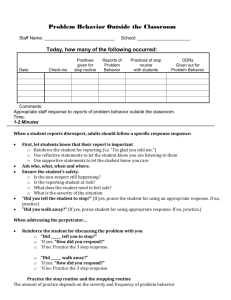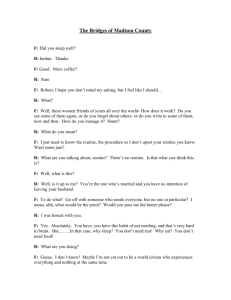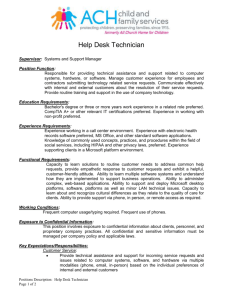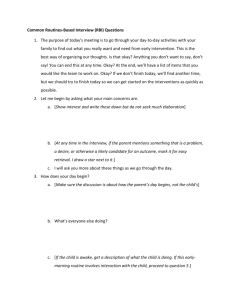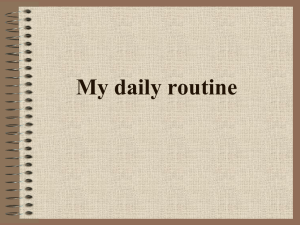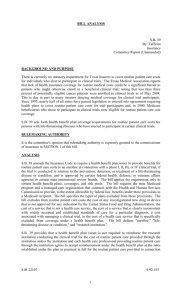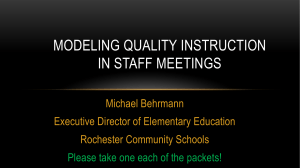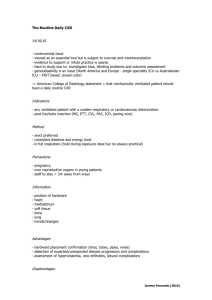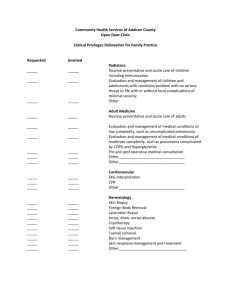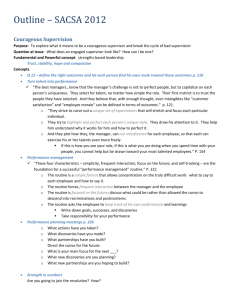Preschool Classroom Set up Checklist
advertisement
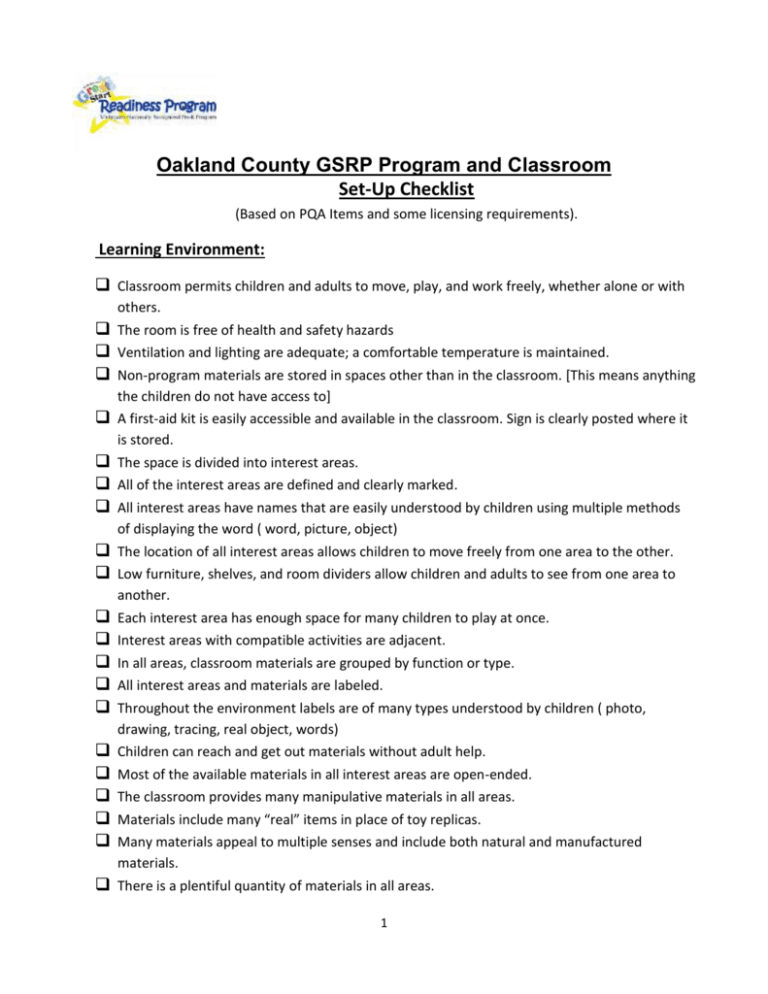
Oakland County GSRP Program and Classroom Set-Up Checklist (Based on PQA Items and some licensing requirements). Learning Environment: Classroom permits children and adults to move, play, and work freely, whether alone or with others. The room is free of health and safety hazards Ventilation and lighting are adequate; a comfortable temperature is maintained. Non-program materials are stored in spaces other than in the classroom. [This means anything the children do not have access to] A first-aid kit is easily accessible and available in the classroom. Sign is clearly posted where it is stored. The space is divided into interest areas. All of the interest areas are defined and clearly marked. All interest areas have names that are easily understood by children using multiple methods of displaying the word ( word, picture, object) The location of all interest areas allows children to move freely from one area to the other. Low furniture, shelves, and room dividers allow children and adults to see from one area to another. Each interest area has enough space for many children to play at once. Interest areas with compatible activities are adjacent. In all areas, classroom materials are grouped by function or type. All interest areas and materials are labeled. Throughout the environment labels are of many types understood by children ( photo, drawing, tracing, real object, words) Children can reach and get out materials without adult help. Most of the available materials in all interest areas are open-ended. The classroom provides many manipulative materials in all areas. Materials include many “real” items in place of toy replicas. Many materials appeal to multiple senses and include both natural and manufactured materials. There is a plentiful quantity of materials in all areas. 1 May multiple sets of materials are available so that several children can play with the same materials at the same time. Materials reflect the home and community cultures and special needs of program children. Materials depict a wide range of non-stereotyped role models and cultures. Multicultural materials are integrated into the classroom. A variety of children’s work is displayed. All displays of children’s work consist of creations stemming from children’s interests and ideas. ( Should be an area for children to post their creative expressions from play, items created at the writing center, photos of them building and creating in play) Adult-made displays always reflect or depict children’s interests and experiences. The outdoor play area is free of health and safety hazards. The outdoor play area includes both stationary and portable equipment and materials for various types of play. Daily Routine Daily routine is consistent from day to day. Daily routine is posted for teachers and parents Daily routine is posted for children at their eye level and using pictures, symbols, and words for each part of the daily routine. The Daily Routine must include times for children to: make plans; carry out their plans; recall and discuss their activities; engage in small-group activities; engage in large group activities; have snacks or meals; clean-up; transition to other activities; play outside; and nap or rest (if applicable) Appropriate time is allocated for each part of the daily routine. Children are engaged in Active Learning during each part of the daily routine. Children do things for themselves at snack or meal times. Adults eat with children and interact in a conversational manner during snack or meal times. Nutritious food is provided by the program. Dietary requirements are posted and accommodated. Children are given choices of quiet activities at rest time. Wet or soiled clothing is changed immediately. Children use the bathroom facilities as needed. Thirty minutes of outside time is provided daily. Throughout the daily routine children are given opportunities to make many choices. 2 Adult-Child Interactions Separation challenges are dealt with in a supportive and nurturing way (Ex. Adult acknowledges child’s feelings; provides time for child to enter activities at his/her own pace; parents / family encouraged to stay. Adults focus on children as opposed to classroom cleaning tasks or other duties during the program day. Adults show positive, calm, respectful, and nurturing attention to children. Adults ask questions sparingly and use open-ended questions, comments, and acknowledgements. Adult use many strategies to support English Language Learners in learning their new language and interacting with English speaking peers. Adults play as partners with children – following the child’s lead. Adults encourage children’s ideas, suggestions, and efforts throughout the day. At Large Group Time, adults use many strategies to support and extend children’s ideas and actions. Adults provide scaffolding for children as they play and work. Adults encourage children to use materials in individual and innovative ways. Adults support children when they choose to repeat an activity. Adults use acknowledging and encouraging statements as opposed to judgmental praise statements. Rewards and reward systems are avoided. Adults support children’s peer interactions. Conflict situations are dealt with calmly and in a matter-of-fact way. Adults use the HighScope 6-Steps of Conflict Resolution when social conflicts occur. Curriculum, Planning, and Assessment The program and staff consistently use ONE research based, and researched, comprehensive curriculum (see the GSRP Implementation Manual for recommended choices) Staff (teacher and co-teacher) meet daily to discuss and make plans for their own children the next day. Teaching team members participate equally in planning and conducting activities. Systematic and complete child records are kept and maintained [*See section below]. Staff uses child observation and anecdotal records to focus on children’s development, to plan for individual children, and to share information with parents. Staff uses an approved child observation assessment measure that is of proven reliability and validity. [See the GSRP Implementation Manual for recommended choices). 3 *Records: All records and documentation required by licensing Health Appraisal Form Current Shot Record or Waiver Birth certificate for each child Complete Child Information Card (nothing blank) Written permission for field trips or photo/video, etc. Income documentation Risk factor documentation (if over 250% poverty) Child Screening Child Assessment Reports Parent / Family Conference documentation Home Visit documentation 4
